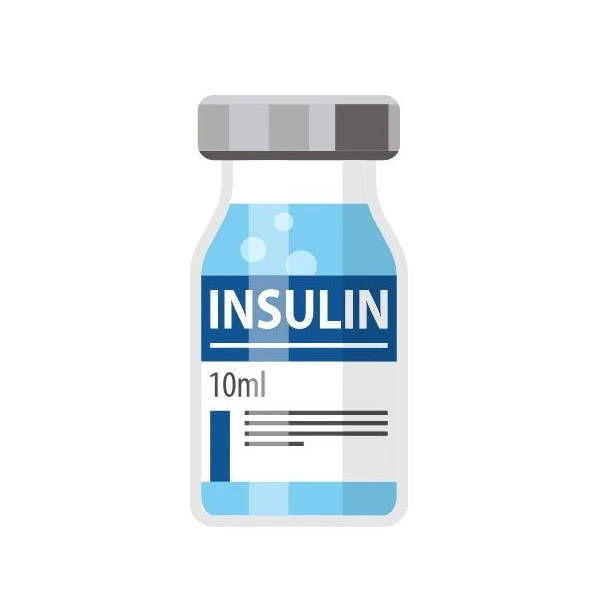
Learn the different types of long-acting insulin and their types, action profiles, and best practices for diabetes in order to maintain blood sugar level.
WHAT IS NORMAL BLOOD GLUCOSE LEVEL?
Understand about insulin glargine, insulin detemir, and insulin degludec, and find the most suitable long-acting insulin regimen for your lifestyle.
Ensure optimal diabetes management with proper storage, administration, and regular monitoring.
Table of Contents
ToggleTHE ROLE OF LONG-ACTING INSULIN IN DIABETES MANAGEMENT
Long-acting insulin is designed to provide a steady and consistent level of insulin in the bloodstream over an extended period.
This helps cover the body’s basal insulin needs between meals and during sleep.
There are several types of long-acting insulin available, each with unique properties that influence their duration of action and onset.
Read here…UNDERSTANDING INSULIN HORMONE: SYNTHESIS, FUNCTIONS, AND REGULATION
EXPLORING LONG-ACTING INSULIN TYPES AND THEIR ACTION PROFILES
There are several types of long-acting insulin, each with its unique action profile. Understanding these differences can help diabetes patients and their healthcare providers choose the most suitable insulin regimen for their needs.
The different types of long-acting insulin include:

Insulin Glargine (Brand names: Lantus, Basaglar, Toujeo): Consistent Blood Sugar Control
- Insulin glargine is a long-acting insulin analog with a relatively flat and consistent action profile.
- It starts working within 1 to 2 hours after injection and has no pronounced peak.
- Depending on the formulation, it can remain active for approximately 24 hours (Lantus) or up to 36 hours (Toujeo).
- Basaglar is a biosimilar to Lantus and has a similar duration of action. Toujeo, have a more concentrated formula, allowing for more extended action with fewer injections.
Insulin Detemir (Brand name: Levemir): Flexibility in Dosage Timing
- Insulin detemir is a long-acting insulin option that has a more variable duration of action compared to insulin glargine.
- It begins to work within 1 to 2 hours after injection and may last up to 24 hours.
- Some individuals may require twice-daily dosing to maintain consistent blood sugar control.
Insulin Degludec (Brand name: Tresiba): Ultra-Long Action and Lower Hypoglycemia Risk
- Insulin degludec is an ultra-long-acting insulin option that provides a prolonged and consistent duration of action.
- It starts working within 1 hour of injection and can last up to 42 hours.
- Due to its long duration, it offers more flexibility in dosing time and has lower risk of hypoglycaemia if a dose is delayed.
AVOIDING MIXING DIFFERENT INSULIN TYPES FOR PREDICTABLE BLOOD SUGAR MANAGEMENT
It’s important to note that long-acting insulin should not be mixed with other insulin types in the same syringe, as it may affect their action profiles and lead to unpredictable blood sugar fluctuations.
CHOOSING THE RIGHT LONG-ACTING INSULIN REGIMEN BASED ON LIFESTYLE AND INSULIN REQUIREMENTS
The choice of long-acting insulin depends on individual factors such as lifestyle, insulin requirements, blood sugar patterns, and individual response to insulin.
Some individuals may prefer the convenience of once-daily dosing with insulin glargine or insulin degludec, while others may find twice-daily dosing with insulin detemir more suitable.
Healthcare providers work closely with individuals with diabetes to determine the most appropriate long-acting insulin regimen based on their unique needs and medical considerations.
STORAGE AND HANDLING OF LONG-ACTING INSULIN: BEST PRACTICES FOR PRESERVATION
Refrigeration and Proper Storage Techniques
Long-acting insulin vials or pens should be refrigerated when not in use.
Keeping insulin at the recommended temperature helps to preserve its potency. However, it is essential to avoid freezing the insulin, as extreme temperatures can render it ineffective.
Gentle Mixing Before Injection
Before administering long-acting insulin, it is crucial to mix the insulin gently. Rolling the insulin pen or vial between the palms helps to ensure a uniform suspension of insulin particles, leading to consistent dosing.
Administration Methods: Syringes vs. Insulin Pens
Long-acting insulin can be administered using traditional syringes or insulin pens, each with its advantages.
Subcutaneous Injection Techniques
When injecting long-acting insulin, it is typically administered subcutaneously, which means injecting it just beneath the skin.
Usually injected into the subcutaneous tissue of the abdomen, thigh, or upper arm using a syringe or insulin pen with a fine-gauge needle.
Proper injection technique, including needle insertion angle and site rotation, can improve insulin absorption and reduce discomfort.
Read a detailed post on INSULIN SYRINGE WITH PROPER METHOD OF INJECTION.
Fine-Gauge Needles for Comfortable Administration
Fine-gauge needles are commonly used for insulin injections, as they cause less pain and discomfort.
Utilizing the right needle size can enhance the overall insulin injection experience.
CONCLUSION
Regular monitoring of blood sugar levels, along with ongoing communication with healthcare providers, is crucial to ensure optimal diabetes management and to make any necessary adjustments to the long-acting insulin regimen.
FAQS
- Q: Can I mix different types of long-acting insulin?
A: No, mixing different types of insulin can lead to unpredictable blood sugar levels. Always follow the prescribed regimen and consult your healthcare provider before making any changes.
- Q: Which long-acting insulin is best for reducing the risk of hypoglycemia? A: Insulin degludec (Tresiba) is known for its ultra-long action, which may reduce the risk of hypoglycemia compared to other long-acting insulin types.
- Q: Are insulin pens more comfortable than traditional syringes for injection?
A: Yes, insulin pens with fine-gauge needles generally cause less pain and discomfort during injection.
- Q: How often should I monitor my blood sugar levels when using long-acting insulin?
A: Regular blood sugar monitoring is essential for optimal diabetes management. The frequency of monitoring may vary based on individual needs and should be discussed with your healthcare provider.
- Q: Can long-acting insulin be refrigerated?
A: Yes, long-acting insulin should be refrigerated when not in use to maintain its potency. However, avoid freezing the insulin, as extreme temperatures can render it.














Leave a Reply